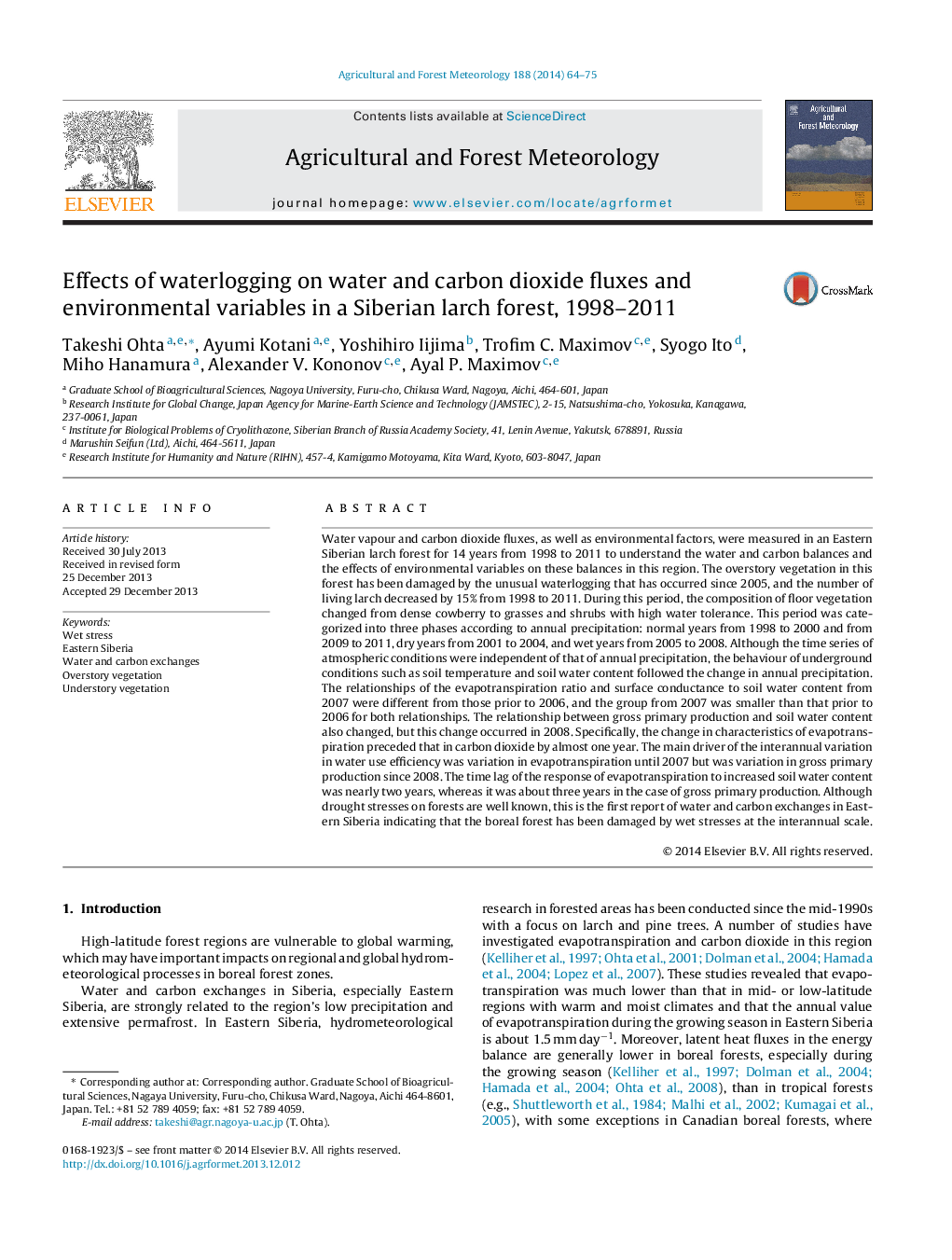| Article ID | Journal | Published Year | Pages | File Type |
|---|---|---|---|---|
| 81763 | Agricultural and Forest Meteorology | 2014 | 12 Pages |
•Soil moisture affected evapotranspiration and GPP.•Evapotranspiration and GPP dropped after waterlogging.•Droplet of evapotranspiration occurred 1-year earlier than that of GPP.
Water vapour and carbon dioxide fluxes, as well as environmental factors, were measured in an Eastern Siberian larch forest for 14 years from 1998 to 2011 to understand the water and carbon balances and the effects of environmental variables on these balances in this region. The overstory vegetation in this forest has been damaged by the unusual waterlogging that has occurred since 2005, and the number of living larch decreased by 15% from 1998 to 2011. During this period, the composition of floor vegetation changed from dense cowberry to grasses and shrubs with high water tolerance. This period was categorized into three phases according to annual precipitation: normal years from 1998 to 2000 and from 2009 to 2011, dry years from 2001 to 2004, and wet years from 2005 to 2008. Although the time series of atmospheric conditions were independent of that of annual precipitation, the behaviour of underground conditions such as soil temperature and soil water content followed the change in annual precipitation. The relationships of the evapotranspiration ratio and surface conductance to soil water content from 2007 were different from those prior to 2006, and the group from 2007 was smaller than that prior to 2006 for both relationships. The relationship between gross primary production and soil water content also changed, but this change occurred in 2008. Specifically, the change in characteristics of evapotranspiration preceded that in carbon dioxide by almost one year. The main driver of the interannual variation in water use efficiency was variation in evapotranspiration until 2007 but was variation in gross primary production since 2008. The time lag of the response of evapotranspiration to increased soil water content was nearly two years, whereas it was about three years in the case of gross primary production. Although drought stresses on forests are well known, this is the first report of water and carbon exchanges in Eastern Siberia indicating that the boreal forest has been damaged by wet stresses at the interannual scale.
